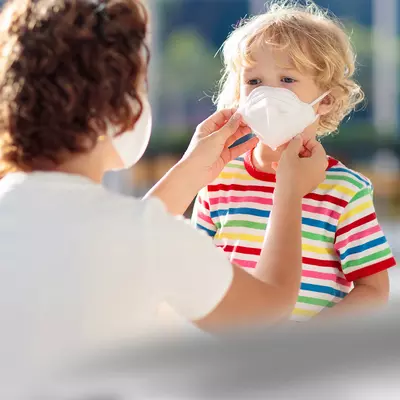- AdventHealth

Choose the health content that’s right for you, and get it delivered right in your inbox.
Over the last few years, the COVID-19 pandemic has reshaped so many aspects of our lives —from health habits and work environments to social norms. And as we’ve learned to adapt to these changes, it’s COVID-19 is likely here to stay for a while in its different variants.
Many experts have already begun to treat COVID-19 as an endemic rather than a pandemic. Some studies suggest that in 2024, four years after the pandemic began, about 15% of the population could be infected at any given time.
What does this mean for us and our communities? We’re here to explain the differences between pandemic and endemic and how you can continue to successfully cope with having COVID-19 around in the long run.
Pandemic vs. Endemic
A pandemic occurs when an epidemic — the outbreak of more than the expected number of disease cases in a small population — vastly spreads over a large geographic area. Pandemics are known to cause widespread disruption, illness and hardship as we have experienced since 2020.
An endemic means a disease is spreading in a community at the normal or expected level. A pandemic begins to shift to an endemic once the disease becomes more stable and manageable. It doesn’t mean the virus goes away and that there won’t be occasional outbreaks. It’s just less intrusive in daily life.
While the borders between a pandemic and endemic aren’t definitive, there are signs that COVID-19 is transitioning to an endemic. The overall spread of the virus has slowed as more and more people get vaccinated and/or build up natural immunity. With the development of treatment options and better immune response, symptoms are less severe and there are fewer overall cases and hospitalizations, making health care systems less stressed.
Living With COVID-19
In a COVID-19 endemic rather than pandemic, the virus will still be circulating, so infections are still very possible and will surge from time to time. As with the more common influenza endemic, these ups and downs are common. But they don’t need to significantly change how we live.
We don’t know the future path of COVID-19, but the good news is we’re now better able to manage it. As we think about living with COVID-19 long-term as an endemic, keep these tips in mind:
- Continue to pay attention to guidance on vaccines and booster shots
- Don’t let down your guard when it comes to healthy habits like hand-washing
- Take advantage of rapid testing to help prevent spread of the disease
- You can still take extra precautions such as wearing a mask in crowded places when case counts are high or rising
We’re Here for You for the Long-Term
The best way to navigate COVID-19 is to stay informed, and we’re here to help. Get ongoing news and support about the virus at our Coronavirus Resource Hub. We want you to stay well.



